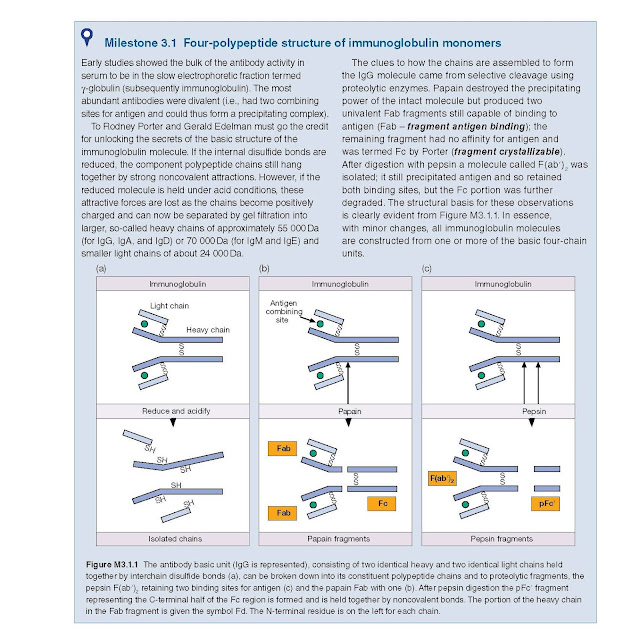Five Classes Of
Immunoglobulin
Antibodies
are often referred to as immunoglobulins (immune proteins). There
are five classes of antibodies or immunoglobulins, termed immunoglobulin G
(IgG), IgM, IgA, IgD, and IgE. All these classes have the basic four‐chain
antibody structure but they differ in their heavy chains, which are termed γ,
μ, α, δ, and ε, respectively.
The differences are most pronounced in the Fc
regions of the antibody classes and this leads to the triggering of different
effector functions on binding to antigen. For example, IgM recognition of
antigen might lead to complement activation, whereas IgE recognition (possibly
of the same antigen) might lead to mast cell degranulation and anaphylaxis
(increased vascular permeability and smooth muscle contraction). These
differences are discussed in greater detail later. Structural differences also
lead to differences in the polymerization state of the monomer unit shown in
Figure 3.1. Thus, IgG and IgE are generally monomeric, whereas IgM occurs as a
pentamer. IgA occurs predominantly as a monomer in serum and as a dimer in seromucous
secretions.
The major
antibody in the serum is IgG and, as this is the best‐understood antibody in
terms of structure and function, we shall consider it first. The other antibody
classes will be considered in relation to IgG.





